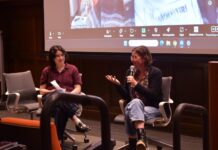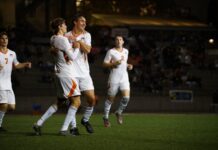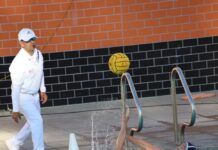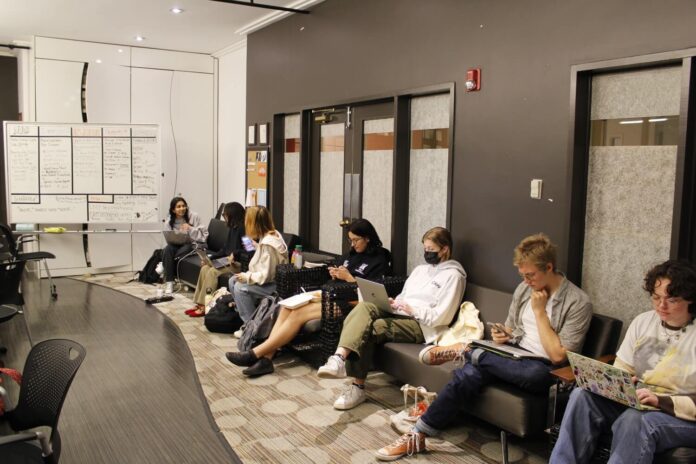
2023 marks the 130th year of The Occidental, the student-run newspaper at Occidental College founded in 1893. Despite this long-running history, readers may not know the extensive process of publishing a weekly newspaper.
The Occidental considers itself a learning newspaper. According to Haley Jones ’22, a campus news editor and staff writer for The Occidental, the teaching and mentoring aspect of the paper was an invaluable resource. Jones is now a general assignment reporter for The Lancaster News in Lancaster, South Carolina.
“Learning about the ins and outs of being a reporter from pitching the idea, forming your angle, talking to sources and submitting drafts for editing are all the steps you need to understand,” Jones said.
Barbara Thomas, the staff adviser for The Occidental since 2016, was brought into the newsroom to help the students achieve professional journalistic standards. According to Thomas, the paper aims to align itself with journalism that puts fairness, objectivity, transparency and accountability first.
“Everyone abides by the same level of professionalism. Our paper follows the code of ethics established by the Society for Professional Journalists (SPJ),” Thomas said.
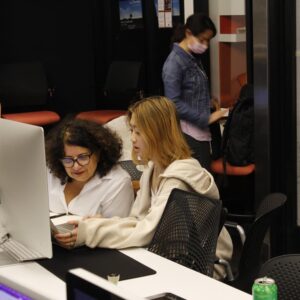
Every week, a team of 50 to 60 students are committed to publishing fact-based and independent news contents for The Occidental.
Editors are responsible for content curation and distribution, while writers and media artists interact with different subjects and send their articles, photographs or illustrations back to the editing team.
Additionally, the senior team involves three students: Editor-in-Chief Anissa Basnayake (sophomore), Managing Editor Mia Anzalone (junior), former Editor-in-Chief Meghan Lee (senior) and adviser Thomas.
The paper’s tight weekly schedule requires an interlocking effort from multiple teams.
Sunday Pitch is the big day for everyone at The Occidental. Not only does it mark the beginning of the whole publication process, but it is also when all the ideas come together.
“A pitch is just the germ of an idea,” Thomas said. “After people have been here a little bit, they learn how to take a germ of an idea and turn it into an article.”
Editors’ pitches get cleared with the senior team before their official launch on the whiteboard for the general pitch where writers, photographers and illustrators then sign up for stories at 5 p.m. Sunday. However, pitch does not bear any hierarchical implications at the newsroom of the Occidental, according to former Editor-in-Chief Divya Prakash. All newspaper staff and even students who are not on the paper are always welcomed to pitch.
“Editors are just 10 or so people, and we cannot know everything that’s going on in the whole school,” Prakash said. “I wouldn’t necessarily look at being an editor as the best job, or being a writer is in any way lower. It is just about what you get your energy from.”
Writers
According to staff writer Olivia Correia (first year), section editors will send out post-pitch emails by 9 p.m. detailing expectations for the article and useful people to reach out to for interviews. Staff writers’ jobs entail interviewing these sources and writing articles.
“I literally get right on top of emailing people,” Correia said. “If I’m lucky, by Monday afternoon they’ll get back to me. That’s ideal.”
Writing begins once writers have interview material, but if sources take longer to respond, Correia said it can be difficult to turn in the article on time.
“Journalism is pretty hardcore in terms of deadlines and expectations,” Correia said. “[Sourcing] is really tricky to work around, and it’s a reality of journalism and the reality of working for a newspaper.”
Once she is able to get interviews, Correia said it is fun to talk to people she would not have otherwise spoken to or been able to learn from.
“That’s a priceless experience that you can’t get unless you put yourself out there, and working for a newspaper has forced me to do that,” she said.
During interviews, Correia said she takes notes of interesting quotes and important parts of the interview she wants to revisit.
Once interviews are finished, Correia says writers are halfway done. By Friday night, writers must submit a draft of their article to their section editors, making sure to reach the word requirement and include three different sources.
“You really have the story written for you if you can figure out how you want to structure the quotes,” Correia said.
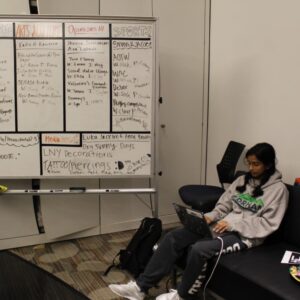
Editors
After submitting an article to section editors, writers get feedback from their editors and make their final adjustments to the article accordingly. Once they are submitted on Sunday night, the editors convene for edits in the Media Suite, where they take their turn making their own final adjustments.
According to Prakash, the weekend is dedicated to editing the first drafts submitted by the writers, with Friday nights and Saturday mornings being when editors take their first look at the week’s stories.
The edited articles will then be sent back to the writers on Sunday, and the writers will have until midnight to make changes.
All stories get finalized on Monday during Monday Night Edits — or MNE as The Occidental staff calls it — which signifies the end of the weekly publishing routine.
“You just get to massage the story,” Prakash said. “A story is like a block of clay, or marble sometimes, and you just have to chisel it to become Michelangelo.”
MNE also means going through 200 to 300 photos submitted by the media artists.
According to Grace Meadows (sophomore), former photo editor for The Occidental, photo editors manage around 25 photographers at a time.
“It’s hard sometimes because people would look at my job as a photo editor as less important, but what I found is, when there’s good media or good photos, [people are] much more inclined to read [a story].” Meadows said.
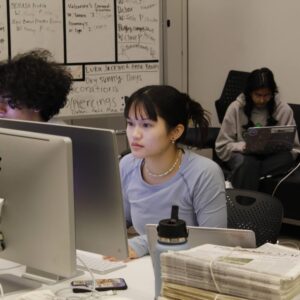
The Occidental’s significance goes beyond local journalism, as it is also where successful careers are incubated. During his junior year, Dominic Massimino ’22 was injured and could not compete in the track & field season, but the Occidental helped him reconstruct his passion. Massimino worked as a sports journalist for the paper, which enabled him to find a community away from his sport.
“I realized that telling other athletes’ stories helped me deal with the pain of my own injury,” Massimino, who now works at The Union Democrat newspaper in Sonora, California, said. “I find myself constantly putting to use the lessons I learned while at The Occidental in my work — in particular the commitment to being relentlessly faithful to the truth.”
Contact Renee Ye at rye@oxy.edu and Oliver Otake at ootake@oxy.edu
![]()


